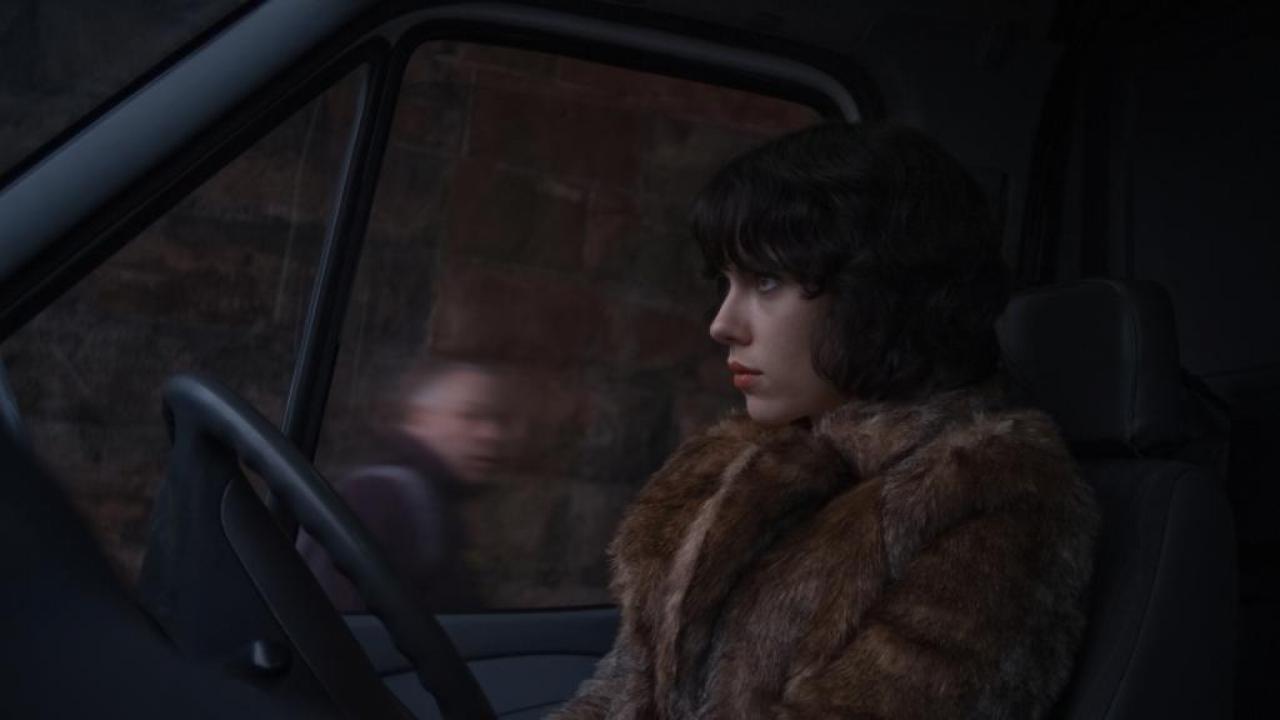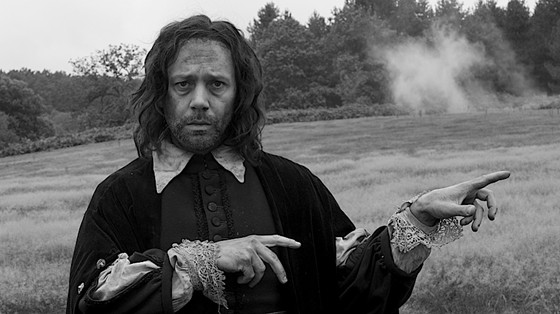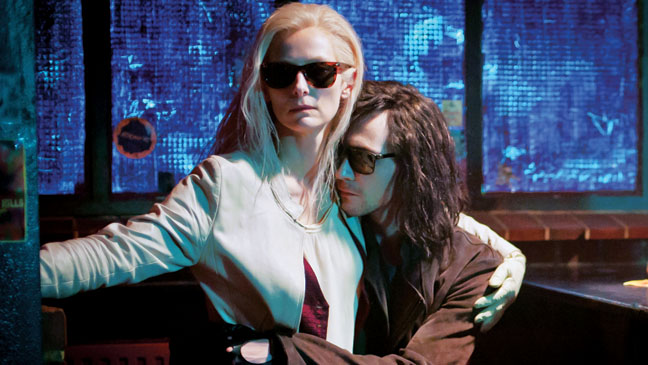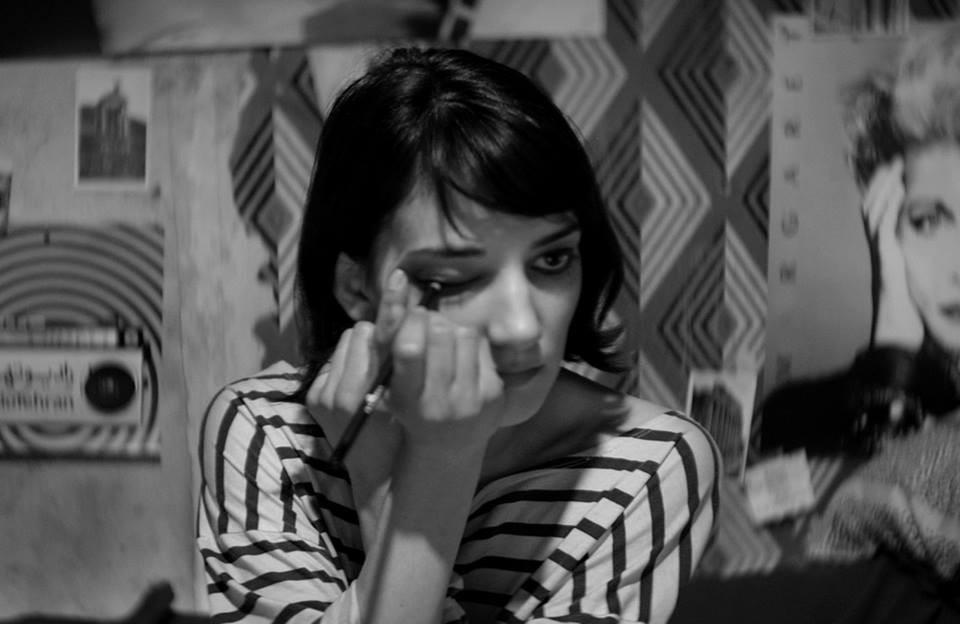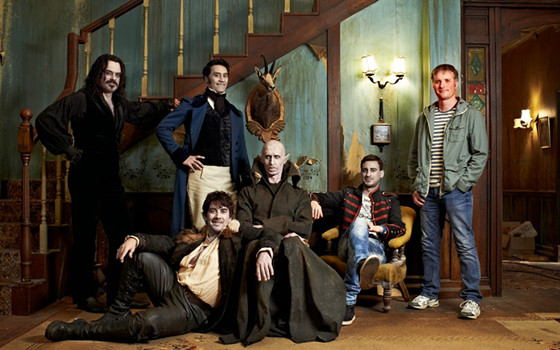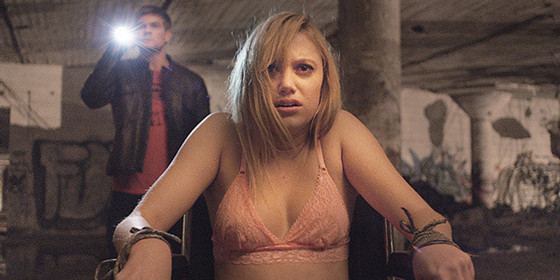16. Under the Skin (2013)
A mysterious woman drives around the Glaswegian landscape in a truck, picking up man who believe they are in for a good time. Like a spider, she traps them in a web of desire, allowing them to blindly follow her into a dark room, where they sink into a pitch-black abyss of sorts, disintegrating them into nothingness. Scenes like that make dialogue an unnecessary component of Jonathan Glazer’s masterpiece, in the sense that the beautiful silent sequences say so much without even making a sound.
Indeed, Under the Skin almost intentionally references various classic cinematic styles (especially German Expressionist films like Robert Wiene’s The Cabinet of Dr Caligari or counterculture classics like Midnight Cowboy), yet it never feels like it has to conform to a specific motif and defies categorization.
It is however, just as enigmatic and mysterious as Kubrick’s 2001: A Space Odyssey and even Denis Villeneuve’s Enemy, and like both those movies, never feeds its audience any obvious clues as to what is happening before their eyes. It is a beautiful piece that manages to combine the best of gritty filmmaking with surreal, abstract art.
Scarlett Johansson’s performance as the female drifter is a subtle portrayal that manages to give the impression that she may be in a constant state of confusion in addition to being cold and withdrawn from humanity. Who or what her character represents is open to interpretation even by the end of the story, but even she tries to discover that as she explores the environment and the people she encounters.
The film manages to play out its moments of thematic terror and violence with grace and subtlety; it explores existentialist ideas and also touches on the notion that we as human beings are responsible for unleashing the monsters buried beneath our flesh.
17. A Field In England (2013)
It is the English Civil War, and in a vast field (almost cut off from the rest of humanity), an awkward alchemist’s assistant named Whitehead, gets thrown into a very bizarre experience of madness and torment. It is after he runs away from his master and a violent battle, that he falls into the hands of Cutler, a fugitive who has taken Whitehead and two others hostage, with the intention of going to a mysterious alehouse. On the way, they encounter a mystical person, O’Niel, whom Whitehead was tasked with retrieving, and upon his arrest, begins to manipulate the group into finding a hidden treasure somewhere in the field.
A Field in England is a perfect example of art not having to explain itself, and the medium of film is utilized to its fullest potential. Framed in grand black and white cinematography, the psychedelic atmosphere reeks of death, degradation and disease, which is heightened as the characters become more submissive to O’Neil’s will, with the help of hallucinogenic mushrooms. O
Ben Wheatley’s horror piece emphasizes the importance of its single setting by allowing its audience the privilege of having a subjective experience, especially in relation to what the field is. The contrast between Whitehead, a man of God, and O’Neil, a man who could very well be the devil in disguise, creates a war of biblical proportions, and gives the impression that the field knows no bounds.
More than just psychological and religious horror, the film explores free will, honour and morality, and allows for criticism of the desperate, gullible people who put their entire faith in the hands of a manipulative, false god, in addition to the monstrous messiah figures themselves. Whether the titular field of the piece is a regular field, the biblical hell, a motionless limbo, or some abstract state of mind, the more one lingers, the more it will feed on your ego and fears.
18. Only Lovers Left Alive (2013)
Adam and Eve, are two aged vampire lovers who reside in separate continents, and appear to be among the last of their kind. Over the years, Adam (played by Tom Hiddleston) has served as a creative influence for countless musicians, but lives a life of isolation and obscurity in Detroit, as the world around him to seems to be plagued by extreme regression and loss of intelligence. Eve (played by Tilda Swinton) resides in Tangier, and is very devoted to scholarly works of literature.
Unlike Adam, she still finds some form of zest for life, and is more of an outgoing personality rather than a brooding introvert. As a result of the gradual pollution of chemicals and drugs, Adam and Eve, like drug addicts, are forced to rely on friends and trustees to supply them with the purest blood they can feed on, to avoid getting a fatal infection. In spite of the chaotic state of the world they live in, their love for one another is eternal, and they will always be there for one another.
The film masterfully blends various genres into one fluid and rich narrative; gothic Romance and survival horror (literally referring to the threat of our protagonists’ extinction in this diseased world) are infused with social satire and elements of tragicomedy. Hiddleston and Swinton make for a great couple; a beautiful dynamic couple filled with witty banter, and mutual love that complement each other like the deepest poetry.
The narrative is fuelled by a unique rock score, which emphasizes the more alienated nature of Adam’s existence; in the sense that he is more interested in living in the past, with his old technology and creations, eschewing modern devices and trends.
The world is a frightening place for the two lovers, being highly commercialized, overpopulated and seemingly dedicated to reducing the rate of global intelligence. However, the film is not entirely cynical on that subject. There is at least a tiny glimmer hope for a new age of artistry and independent creativity that may come to fruition in this dark existence.
19. The Babadook (2014)
Amelia (played by Essie Davis) lost her husband in an automobile accident, while on their way to the hospital for her to give birth to Samuel (Noah Wiseman). As the child grows older, he loses sleep and becomes emotionally disturbed and tormented by a demonic entity. While Amelia dismisses his claims of witnessing such a monster, she finds a mysterious pop-up storybook on his shelf, entitled “Mister Babadook”, that features a bogeyman character who may appear to be the culprit that Samuel raved about.
Who or what is the Babadook? Where did it come from? What does it represent? Even the existence of the book is a mystery, and seems to have a life of its own.
Jennifer Kent’s ambitious film is a claustrophobic and an uncomfortable experience, with the characters never feeling safe in and even out of home. The house itself seems to have its own dark history, where at least one room hides a secret.
Essie Davis gives a dedicated performance that masterfully brings out the fear, the struggle, the torment and the weariness in her character’s personality. Wiseman gives a strong, performance, and complements the more manic aspects of the film with the necessary energy.
The Babadook is an extraordinary creation; a relentless force that constantly thrives on the fears of its victims. The film might be about repressed violent tendencies, paedophobia, and parenthood fears but that is all up to the viewer. For some, The Babadook may be a perfect companion piece to David Lynch’s Eraserhead; whereas the latter is a much more subtle, dreamlike form of neuroses, the former is louder, more aggressive, and a much more violent attack on the senses.
20. A Girl Walks Home Alone at Night (2014)
This is the first “Iranian-vampire-spaghetti western” to come to existence, dear reader. Ana Lily Amirpour almost effortlessly creates the ambitious location that is known as “Bad city’, that is populated with classic archetypes who bring about the themes of degradation and isolation. The film does play with ideas of gender politics and religious satire over the course of its narrative, but it does not have any obvious agenda to flash its viewers with.
Amongst the cast of characters that include a heroin-addicted father, his naïve son, a drug-dealing pimp, there is a vampire who stalks and kills those that commit sin. The titular “girl”, played by Sheila Vand, is a force of nature whose deviousness is as playful as a Looney Tunes character (or even Droopy the Dog) and her ferocity as deadly as the king of vampires, Count Dracula. H
er actions and motives are as mysterious and personal as that of Clint Eastwood’s archetypal “man with no name” character in “Spaghetti Western” history, except that the girl seems to be almost invincible, moving swiftly from location to location and taking care of whatever business she sees fit.
However, Vand takes an inward approach with her performance, making her appearance and expressions subtle yet unpredictable, and giving her character a sense of humanity (not unlike “the man with no name” character).
Visually, and despite the seediness of the town, the film looks beautiful, boasting a very effective use of monochromatic cinematography. The period feels timeless, throwing in aesthetics from various eras like classic cars, techno music and traditional garbs, while also holding a minimalist approach to its design.
Filmed in California and made to look like an Iranian town, A Girl walks home alone at night transports viewers to a whole other world with such confidence in its mythology and universe, that it does not take the Moulin Rouge approach by making a sound-and-light-show in order to show off the ingenuity of its sets (There is also the case of the budget, but one might appreciate that a more subtle approach was always intended).
On a final note, the film contains an eerily electric score, complemented with an unique soundtrack that fits the mood and tastes of the characters and the environment. While it is undeniably a love letter to experimental cinema classics like the films of Alejandro Jodorowsky and Martin Scorsese, A Girl Walks Home Alone at Night creates a genre and style of its own, that will ensure it remains an eternal, undead classic.
21. What We Do in the Shadows (2014)
There is nothing like the feeling one gets when they have the opportunity to explore a genre inside out while simultaneously enjoying the liberation of contributing to an established, growing mythology.
What we do in the Shadows is a beautifully comical mockumentary that creates an underground society of vampire cults, families and units, who have travelled the world for centuries and managed to settle down in Wellington, New Zealand.
The documentary crew in the film follows one specific group of vampires who all play on the various archetypes of Dracula represented throughout films (One explicitly references Count Orlok of Nosferatu iconography, while another invokes George Hamilton’s performance of Dracula). While their personalities are colourful, they do not shy away in showing how they occasionally have to feed on the human residents that inhabit the countryside (with the help of a human assistant, strangely enough).
What we do in the shadows is an ingenious take on the vampire mythos and gives it a much-needed energy that allows it to be compatible with any mood and setting.
22. It Follows (2014)
The characters unfortunate enough to inherit the curse of being followed by the entity known as “It”, will find themselves suffering from extreme cases of anxiety, paranoia and sleep deprivation. The fact that the being is a largely silent killer warrants an urgent requirement for any victim to keep company with others to avoid facing the danger alone.
It Follows personifies the fears of the possible infectious consequences of unprotected sex, while also creating bodies for repressed memories. Owing a good deal to the David Cronenberg directed body horrors of the 1970s such as Shivers (1975), the film creates a mythical entity that proves to be a force to be reckoned with.
Even with a score that evokes the nostalgic synthesized music of 1980s cinema, the dark, eerie atmosphere can never be suppressed, and viewers may be left peeking over their shoulders both during and after the movie (just in case).
Author Bio: Faisal Al-Jadir is a long time cinephile and an aspriring filmmaker and writer. He holds a B.A. Honours degree in Film Studies from Carleton University, and splits his time between film, podcasting and theatre.
